For some time I have been quietly putting un-dressable dolls on the show table. I started this way 17 years ago but at the time could only make glued wigs, which had hairstyles that were totally trashed by pulling clothes up over the head. Very realistic, you might think, but not what collectors were after. Having more or less got the hang of my own invention of miniature brushable wigs, I have now been able again to make small versions of real removable clothing, slightly simplified for the scale, nevertheless clothing that would have been recognisable to people of the era. I don’t think you could dress and undress the dolls very often; you do need tweezers to get the buttons through the button holes and the fine fabrics are of limited strength. The dolls dressed with removable clothes are mainly 12th scale adults at present. However, it does mean I can now return to one of my passions: costume history.
I first became interested as a teenage am. dram. queen. I trod enough boards to understand how much the clothing we wear influences the way we think. It’s really quite extraordinary. The breathable, washable, stretchy, comfortable clothing of today combined with central heating and fast food give us a relaxed attitude to life that would been inconceivable to our hungry, cold, tight-laced ancestors. Clothing of the past was a major investment for the wearer and expected to last a long time. Before the recent invention of trouser fabric with added stretch, breeches were the accommodating outer nether garment for gentlemen and not so gentle men for three hundred years in Britain. Early versions, long and very short began to be worn in the sixteenth century and variants continued into the first two decades of the nineteenth century.
Here’s a chap to show you what would be boring to tell you, he could be from the latter part of the eighteenth century right up to the change to long trousers if he lived in an unfashionable rural area.
As you can see from the large picture where he is putting his breeches on, these were highly adjustable garments. There are two rows of buttons to fasten the front. For attending to the calls of nature one button will do, for more room for a chap who has supped very well, a discreet button released on either side will still leave him dressed but able to breathe. Similarly for his wife, accommodating his changing figure as he ages, the buttons can be moved in slanting lines to cover a corporation being carried low or high and for leaner times, when the buttons are moved closer, the spare fabric is simply overlapped on the inside. The adjustability doesn’t end there. As you can see it wasn’t only Bobby Shafto who had silver buckles at his knee; breeches had metal buckles which could be loosened to lengthen the leg and tuck it flat into riding boots, or tightened to pull the garment up at the knees for warm weather and wading across streams. Such latitude in the length was no doubt a great relief to the mothers of growing boys. Breeches of quality gentlemen in portraits are frequently shown to fit the leg closely; however, a visit to a costume museum with enough samples might persuade you that ‘close fitting and fine cloth’ are less usual descriptions than ‘voluminous and hard wearing.’ A remarkable garment, replaced by many others but unequalled in usefulness.
I’ve given my chap hose joined at the top. Although Queen Elizabeth the First was the first person in history to wear machine knitted stockings, garments that we would recognise as tights, albeit very loose fitting, were worn from early mediaeval times. There is a tendency for under garments to become outer wear and sometimes for the reverse to occur. This happened long before Madonna went on stage in her bra. In the margins of Piers Plowman and other mediaeval manuscripts, illustrations show the peasants working in the fields in long hose, tied at the waist, and loose shirts. Such depictions are common around the twelfth century, which might place Robin Hood and his men in tights in this era. In a couple of hundred years the tights have vanished under long robes but sometimes what is being worn under there is a knee length version, the precursor of breeches.
What would Mr Darcy have thought of Lycra? Whilst it is more practical for swimming in than your shirt and breeches, somehow the proof of the historical pudding is that everyday clothes in unusual circumstances are always worth a second and third look.
Here we are at the end of London fashion week. Were there any breeches on the runways? There were certainly close fitting high collared coats and underneath the models were wearing the modern descendants of early mediaeval tights, a garment arguably a thousand years old. The more some things change, the more they stay the same.

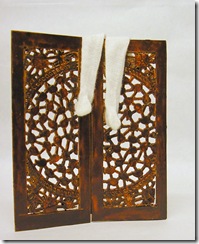
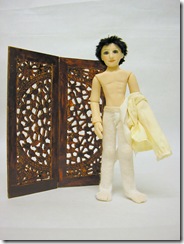
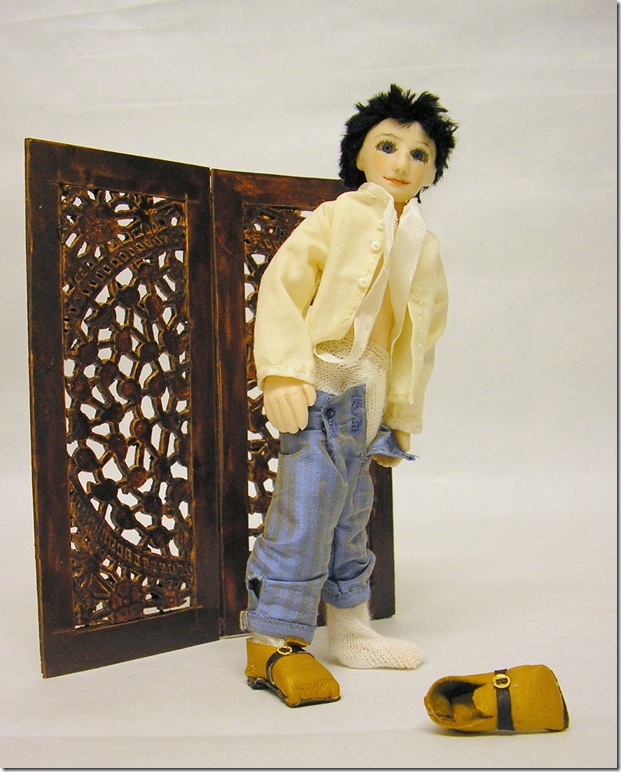
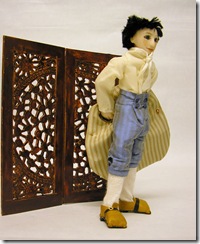
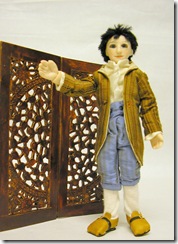
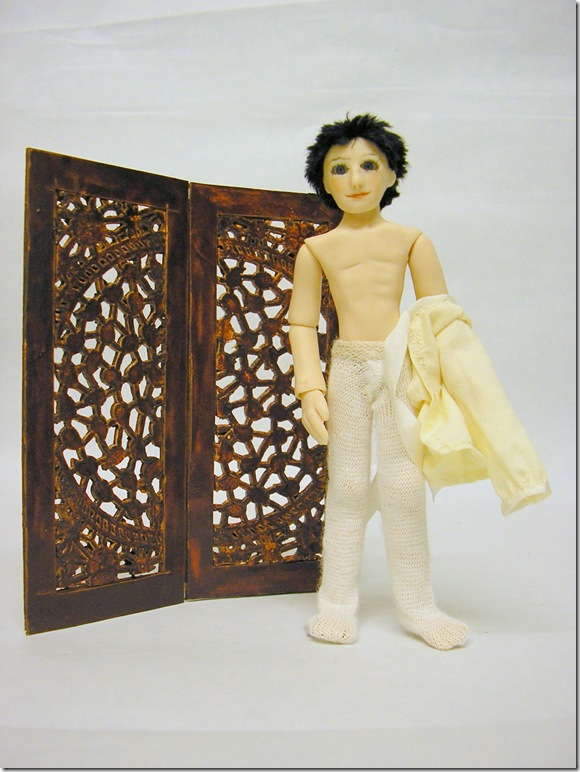
One Response to Breeches.